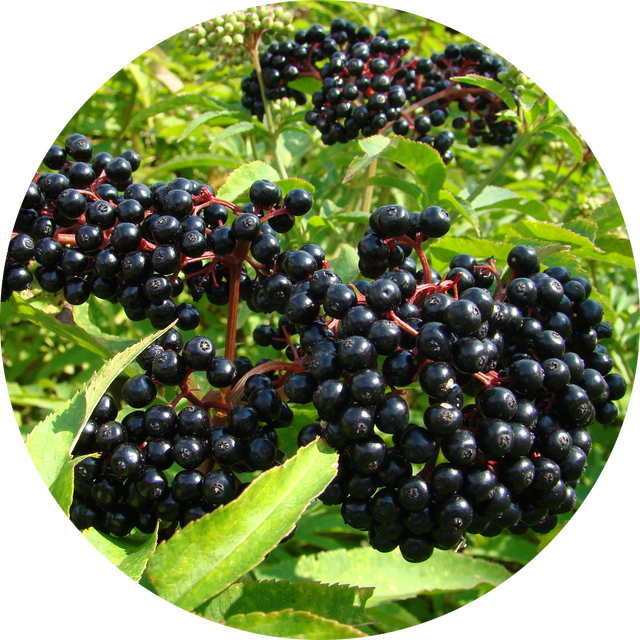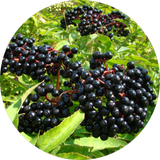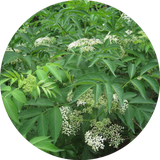- PLANT MEDICINE
- >
- Tinctures
- >
- ELDERBERRY TINCTURE
ELDERBERRY TINCTURE
Family: Adoxaceae
Genus: Sambucus
Species: Several species, including Sambucus nigra (European elderberry) and Sambucus canadensis (American elderberry)
Synonyms: None commonly used
Common Names: Elderberry
Parts Used: Berries, flowers, bark
Main Actions: Immunomodulatory, antiviral, antioxidant
Other Actions: Anti-inflammatory, diaphoretic, laxative
Description: Deciduous shrub or small tree with clusters of white or cream flowers and dark purple to black berries
Tribal and Herbal Medicine Uses: Traditional remedies for colds, flu, infections, and inflammatory conditions
Plant Chemicals: Flavonoids, phenolic acids, anthocyanins, essential oils
Biological Activities and Clinical Research: Antiviral activity against influenza viruses, immunomodulatory effects, antioxidant properties
Current Practical Uses: Dietary supplement for immune support, herbal remedy for colds and flu
Main Preparation Method: Syrups, tinctures, teas, capsules
Main Actions (in order): Immunomodulatory, antiviral, antioxidant, anti-inflammatory
Main Uses: Immune support, colds, flu, viral infections
Properties/Actions Documented by Research: Antiviral, antioxidant, immunomodulatory
Other Properties/Actions Documented by Traditional Use: Diaphoretic, laxative
Cautions: Berries must be cooked before consumption to avoid toxicity; potential allergic reactions
Traditional Preparation: Infusions, decoctions, syrups
Contraindications: Pregnancy, autoimmune diseases
Drug Interactions: None reported, but caution advised with immunosuppressive drugs
Recommended dosage: 1.25 to 2.5 ml taken 2-3x daily in a small glass of water or juice on an empty stomach for better absorption.



